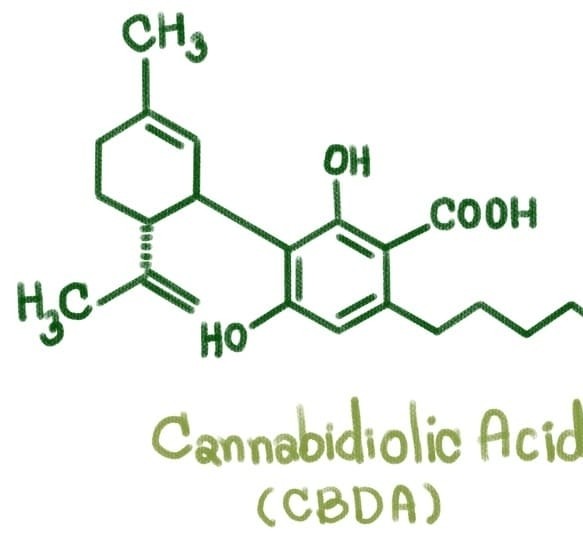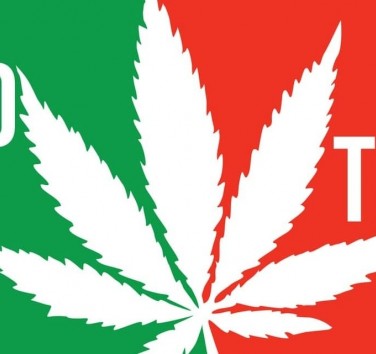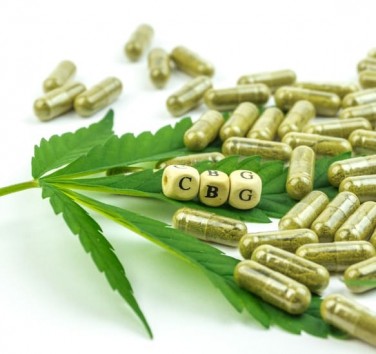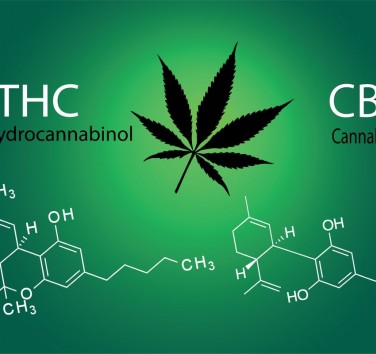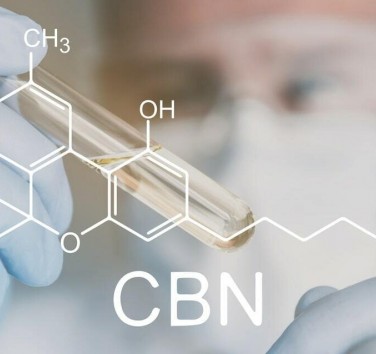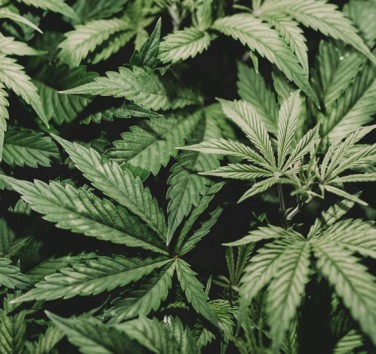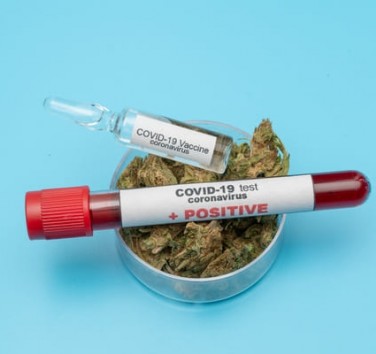In this article, we will provide you with the existing information on CBDA. We will see what exactly CBDA is, how it differs from other cannabinoids present in cannabis, what its benefits are and how it is used today.
What is CBDA?
Cannabidiolic acid, or CBDA for short, is a natural, non-psychoactive compound produced by the cannabis plant. This cannabinoid is a relatively recent discovery that was isolated from cannabis only in 1996, while work on CBD had already begun in the 1940s
CBDA is found mainly in raw, unprocessed cannabis plants, unlike CBD, which is the result of plant modification. CBDA can be said to be the original but acidic form of CBD. It is found in very large quantities in the trichomes of the plant
This compound is 100% natural and can only be found in the raw cannabis plant. When cannabis is processed for marketing, CBDA, like all other cannabinoids, undergoes a transformation. If the plant is heated, the acidic compounds, including CBDA, break down into new chemicals, like CBD. It is this process that produces large amounts of CBD from CBDA
Simply put, CBDA in contact with heat produces CBD and carbon dioxide (CO2). The CO2 will then be extracted to obtain the CBD alone. This process is called decarboxylation. So vaping or cooking CBDA involves its transformation into CBD. The general public is only familiar with the neutral forms of cannabinoids, not the acidic form (THCA for THC for example) because there are few opportunities to obtain the acidic forms alone.
In living, growing cannabis plants, CBD is only found in small amounts. It is therefore by drying or heating the plant that breeders can convert CBDA to CBD. What these two compounds have in common is that they have no euphoric effect like THC. They can be consumed during the day while continuing with everyday activities.
All cannabinoids affect the body through the natural endocannabinoid system. They activate neurotransmitters and modulate nervous system responses. They also help regulate many other body systems
.jpeg)
Benefits of CBDA
We know far less about CBDA than we do about THC or CBD, simply because scientists interested in the effects of cannabis thought that the acidic version of cannabinoids offered no benefit. This is why until now, very few serious studies have been conducted on cannabinoids like CBDA
Today, the trend is reversing and research is beginning to emerge on the benefits of CBDA for the human body. So what are these benefits?
The research began in 2008, when some researchers noticed that CBDA had a very similar structure to commonly used non-steroidal anti-inflammatory drugs (NSAIDs). Indeed, these drugs include everyday painkillers such as acetaminophen and ibuprofen. The researchers wanted to know if CBDA worked in the same way as common NSAIDs. They eventually found that CBDA inhibits COX-2, the same body chemical that is inhibited by NSAIDs.
However, CBDA is not just used to reduce inflammation. It can also be used to treat nausea (comparative study of CBD and CBDA on vomiting, 2013) and anxiety. In this case, there is a strong similarity between CBDA and CBD. CBDA would even be more effective in treating its symptoms
On the other hand, CBDA has been shown to be far more effective than CBD in activating the serotonin receptor that reduces nausea and anxiety. This effect is even more pronounced in chemotherapy patients who use ondansetron (OND) to treat nausea.
We can therefore conclude that CBDA is considered anti-inflammatory, anti-nausea and brings potential positive actions on the unpleasant symptoms of cancer
The science around CBDA is very promising. As the product becomes more popular among the consumer community and patients who wish to treat themselves with CBDA, more studies will be conducted
Is CBDA legal in France?
Cannabidiolic acid is currently legal in France and in all European countries. Indeed, the European Union legislation defines that CBDA products with THC values lower than 0.2% are legal and consumable.
.jpeg)
How to use CBDA?
More concentrated preparations are available in the form of sublingual drops and even syrups. If you find the cannabis flavor too overpowering in the oils, you can also try supplements in capsule form
Another method of consuming CBDA is to mix your cannabis oil into a fruit juice or add it to a salad. You can even put it in your morning smoothie with a little sugar to mask the slightly bitter flavor.
In regards to choosing CBDA and which products to select, when purchasing a product, be sure to carefully check the active ingredients. Otherwise, you may end up with a lot of CBD and very little CBDA in your product.
If you're interested in cannabis products, chances are you're hearing more and more about CBDA. Indeed, researchers continue their exploration of this product. To make sure you don't miss out on any future information on the subject, subscribe to our 321 CBD newsletter newsletter and receive regular updates

